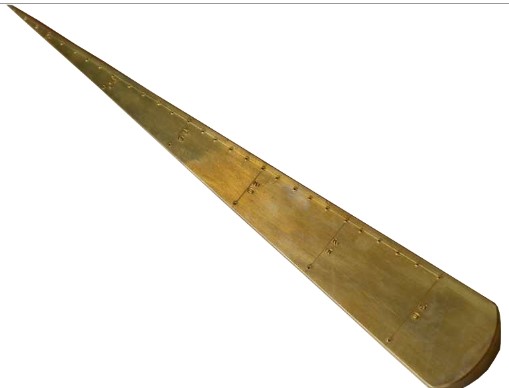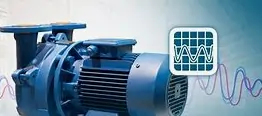
Weight and Mass Calibration UAE
• Quick, accurate services and an easy-to-read Calibration Certificate with a full report of all work and results.
• On-site calibrations at clients' location or in an ISO 17025 calibration lab.
• Repair of test equipment if defects are discovered during calibration.
Mass Calibration
• Weight Calibration: Below 1 kg. (2 lb.) to 50 kg. (100 lbs.)
• Balance Calibration / Scale Calibration: 0 to over 1,000 lbs.
• Comparator Calibration: 0 to over 1,000 lbs.
Mass Calibration Process
• Lab equipped with a variety of scales designed to handle mass calibration of standards and instruments at varied weights and accuracies.
• Calibration requires comparing the weight reading from the scale to a known standard or mass value.
• Instruments can be adjusted to bring measurements within tolerances, or weights can be replaced as needed.
• Mass calibration is performed in a lab with constant temperature and humidity control.
• Weight calibration services are available for a wide-range of classes, including A, B, C, F, M, P, Q, S, S-1, T, 1, 1.1, 2, 3, 4, 5 and 6, as defined in the specification NIST/NBS Handbook 105-1 & 44, NBS Circular 547 and ANSI/ASTM E617.
Difference Between Weight & Mass
• Weight is often taken to mean the same as mass, but for calibration purposes, there is a difference.
• Accuracy is key as weights are used to calibrate scales and other weighing equipment.
• Calibration weights are available in a wide range of classes and specifically used for certain types of balances.
How is it Calibrated?
• Weights must be calibrated with extreme care and precision.
• Methods of weighing techniques in mass metrology include direct reading measurements, weighing by differences, substitution weighing, ABA calibration, ABBA calibration, cyclic weighing, and weighting by sub-division.
How Often Should You Calibrate?
·
Calibration frequency is determined by weight
use and accuracy class, however annual calibration is normally recommended.
·
Types of Weight & Mass Equipment
·
We offer calibration on the following weights
and mass equipment:
·
Weight Set,
·
Weights Set,
·
Mass Set,
·
Test Weight,
·
Test Weights,
·
OIML Weight,
·
OIML Weights,
·
Known Weights,
·
Alpha Biomedical And Diagnostic ,
·
Eisco,
·
GSC International ,
·
METTLER TOLEDO ,
·
Nova Biomedical Corporation,
·
Ohaus Corporation ,
·
Reprocell,
·
Rice Lake Weighing System ,
·
Sartorius,
·
Troemner ,
·
United Scientific Supplies, Inc ,
·
1 g and above: Two-piece, 500 mg and below:
One-piece ,
·
ASTM Weight ,
·
Adjustable Cavity Sheet Weight ,
·
Adjustable Cavity Weight,
·
Adjustable Cavity Weight with Knob ,
·
Analytical Sheet Weight ,
·
Analytical Weight ,
·
Analytical Weight Set Case ,
·
Balance Weight ,
·
Below Balance Hook ,
·
Calibration Mass ,
·
Calibration Weight ,
·
Customized 3rd Weight ,
·
DMC Scanner ,
·
Economy Hooked Weight Set ,
·
Electronic Balance Calibration Weight ,
·
Electronic Balance Calibration Weight with Grip
Handle ,
·
Hook Weight ,
·
Hook Weight Set ,
·
Individual Analytical Weight Case ,
·
Individual Electronic Balance Weight Case ,
·
Individual Metric Economical Sheet Weight with
One Side Turned Up ,
·
Individual Metric Economical Weight ,
·
Individual Metric Economical Weight with
Adjusting Cavity ,
·
Individual OIML Weight Case ,
·
Large Metric Analytical Weight Set ,
·
Large Weight Set ,
·
Medium Metric Analytical Weight Set ,
·
Medium Weight Set ,
·
Metric Analytical Sheet Weight with One Side
Turned Up ,
·
Metric Analytical Weight ,
·
Metric Analytical Weight with Handling Knob ,
·
Metric Attachment Weight Set ,
·
Metric Economical Weight Set ,
·
One Piece Metric Analytical Sheet Weight ,
·
One Piece Metric Analytical Sheet Weight with
One Side Turned Up
·
One-Piece
·
Replacement Case for 10 g to 500 g Individual
Weights
·
Slotted Weight
·
Slotted Weight Set with No Certificate
·
Small Avoirdupois Test Weight Set
·
Small Metric Analytical Weight Set
·
Small Metric Test Weight Set
·
Small Weight Set
·
Stacking Tray
·
Standard Line Weight
·
Standard Line Weight Set
·
Test Weight
·
Two-Piece
·
Two-Piece Analytical Weight
·
Two-Piece Analytical Weight With Knob
·
Two-Piece Electronic Balance Calibration Weight
·
Two-Piece Metric Analytical Weight
·
Weight
·
Weight Hanger
·
Weight Set
·
Weight Set with No Certificate
·
Weight with Knob, One Piece (Monobloc)
·
Wire Weight




